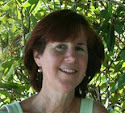These first 3 beautiful bird photos were taken by Ian at Plymouth Beach. Captions and photos taken from his facebook page.

Red Knots! How pretty. Six present on the beach today.

Semipalmated Sandpiper, prancing

Roseate Terns on a possible nesting site. Yet to be confirmed breeding on the beach, but this male continued displaying to the female for the rest of the day in the same spot..curious..
Ian spent the Memorial weekend monitoring nesting bird disturbances by people, cars, or predators at Plymouth Beach. The data he collected is useful for protecting the endangered species of Piping Plovers, shorebirds that have nested on this spit of land long before man showed up. There are 2 groups on Plymouth Beach, the people who feel they have the right to drive on the beach whenever they want to regardless of other people wanting to enjoy the beach free of cars; let their dogs run off leash running over the nests and birds ...and the conservation people. The Goldenrod Foundation is all about the survival of many nesting and migratory species, and about threats from human behavior to the beach’s ecosystem.
Joe and I visited this beautiful shoreline among a cluster of laughing gulls, Red Knots, Terns and Piping Plovers when we picked Ian up at the end of his work day.

Plymouth Beach, MA. There are sensitive areas of the beach roped off to protect the birds. Unfortunately, unleashed dogs don't read signs...

Ian photographing the Red Knots. His birding scope is on the tripod and Bug Light is in the background.

The very handsome Laughing Gull.

Composition in Seaweed.

Just hanging out.


Ian signaling Joe and I to stay where we were so as not to disturb the birds.

Sneaking up on a shot.

The endangered Piping Plovers, and their young are even more adorable!


This means you, too.


Even on a holiday weekend the area of the beach far south of the Crossover Point, where the cars enter the beach, is very pretty and isolated at the end of the day.

Joe and Ian.
The Piping Plovers nest is a small divot in the sand, very hard to spot, and their eggs look like pebbles. This hole is one of several potential nesting sites the plover scraped for his mate. She did eventually lay up to four eggs in one of the scrapes, and the nest is now protected by this fence. With luck, the chicks of the state and federally protected bird will survive to breed on their own.

The Goldenrod Cottage on the right.

The house where we parked.
























No comments:
Post a Comment